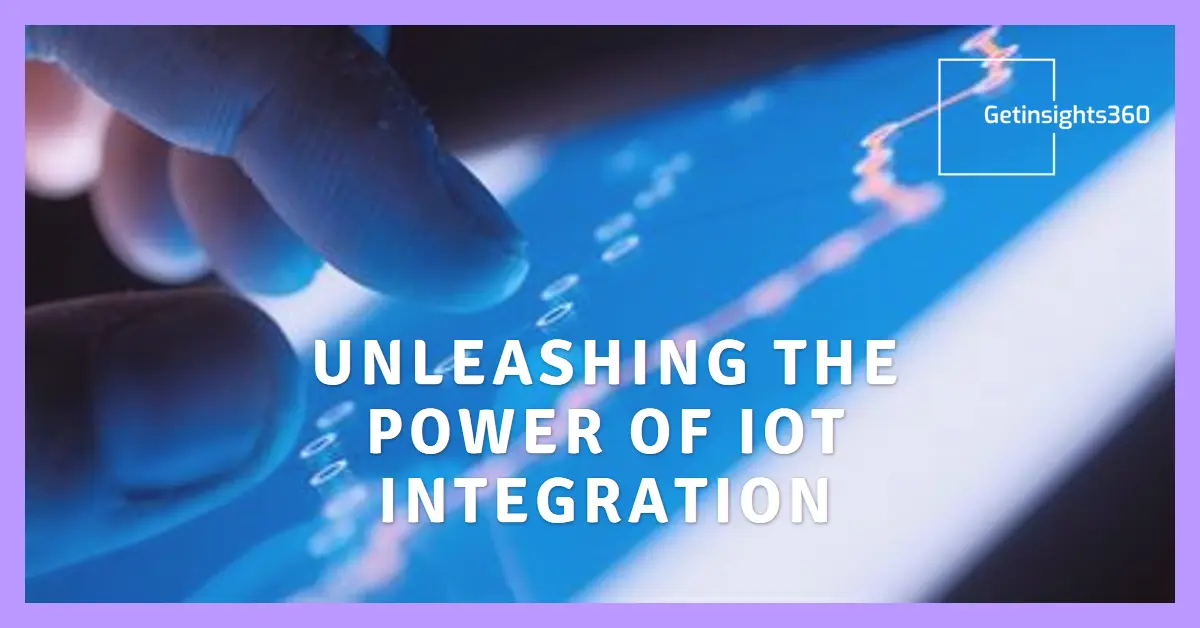In the ever-evolving landscape of technology, the Internet of Things (IoT) has emerged as a transformative force, promising to revolutionize the way businesses operate. One of the key aspects driving this change is the integration of IoT with enterprise systems. In this blog post, we’ll delve into the significance of IoT integration, its benefits for businesses, and how it is reshaping the way enterprises function.
Understanding IoT Integration
At its core, IoT integration with enterprise systems refers to the seamless connection between IoT devices and the existing infrastructure of an organization. This integration enables real-time communication and data exchange between IoT devices and the enterprise’s software and applications.
In simpler terms, imagine a smart thermostat in an office building that can communicate directly with the building’s centralized heating and cooling system. This connection allows the thermostat to automatically adjust the temperature based on occupancy patterns and external weather conditions. This is a basic example of IoT integration in action.
The Benefits of IoT Integration
Improved Efficiency: One of the primary advantages of integrating IoT with enterprise systems is the boost in operational efficiency. Automation of various processes, such as inventory management, equipment maintenance, and supply chain logistics, becomes possible. This not only reduces manual workload but also minimizes the risk of human error.
Real-time Data Insights: IoT devices generate vast amounts of data in real-time. Integration with enterprise systems allows businesses to harness this data for valuable insights. For instance, a manufacturing plant equipped with IoT sensors can gather data on machine performance, enabling predictive maintenance and reducing downtime.
Enhanced Decision-making: With access to real-time data, decision-makers can make informed choices promptly. Whether it’s adjusting production schedules, optimizing resource allocation, or responding to changing market conditions, IoT integration empowers organizations to make data-driven decisions for better outcomes.
Cost Savings: Automation and efficiency improvements often lead to cost savings. Whether through energy optimization, predictive maintenance, or streamlined processes, businesses can realize significant financial benefits by integrating IoT into their enterprise systems.
Industries Embracing IoT Integration
Manufacturing: Factories and production facilities are increasingly adopting IoT integration to enhance production processes, monitor equipment health, and ensure quality control.
Healthcare: IoT devices play a crucial role in healthcare by enabling remote patient monitoring, tracking medical equipment, and optimizing hospital operations.
Retail: In the retail sector, IoT integration facilitates inventory management, personalized customer experiences, and supply chain optimization.
Smart Cities: Municipalities are leveraging IoT to enhance city services, monitor traffic, manage waste, and improve overall urban living.
Overcoming Challenges in IoT Integration
While the benefits are substantial, integrating IoT with enterprise systems comes with its own set of challenges. Security concerns, interoperability issues, and the sheer volume of data generated are common hurdles. Robust cybersecurity measures, standardized protocols, and scalable infrastructure are essential components to overcome these challenges.
The Future of IoT Integration

As technology continues to advance, the future of IoT integration with enterprise systems looks promising. Edge computing, artificial intelligence, and 5G connectivity are poised to play crucial roles in shaping the next phase of IoT evolution.
Edge Computing: Moving computation closer to the source of data generation (at the edge) reduces latency and enhances processing speed. This is particularly crucial for applications requiring real-time responses, such as autonomous vehicles and smart city systems.
Artificial Intelligence: Integrating AI with IoT can amplify the capabilities of connected devices. AI algorithms can analyze vast amounts of data to extract meaningful insights, enabling more sophisticated decision-making and automation.
5G Connectivity: The rollout of 5G networks is set to revolutionize IoT connectivity. With faster and more reliable communication, 5G opens up new possibilities for IoT applications, especially those that demand high bandwidth and low latency.
Implementing IoT Integration in Your Business

If you’re considering incorporating IoT into your enterprise systems, a thoughtful approach is essential. Start by identifying specific use cases that align with your business goals. Whether it’s optimizing processes, improving customer experiences, or gaining insights into operational efficiency, a clear understanding of your objectives will guide the integration process.
Additionally, prioritize cybersecurity measures to safeguard sensitive data. Regular updates and patches, encrypted communication, and secure authentication protocols are fundamental to a robust IoT integration strategy.
Collaboration with experienced IoT solution providers can also expedite the integration process. These experts can offer insights, address challenges, and ensure that your organization maximizes the benefits of IoT technology.
Conclusion
As we navigate the digital era, embracing the integration of IoT with enterprise systems is not just a technological advancement; it’s a strategic imperative. The ability to harness real-time data, drive operational efficiency, and make informed decisions positions businesses at the forefront of innovation. By understanding the benefits, overcoming challenges, and staying abreast of emerging trends, enterprises can unlock the full potential of IoT integration and shape a more connected and efficient future.
